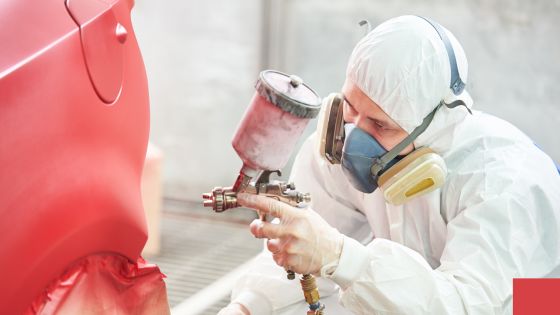Just like anything, even the most well-loved car can begin to show signs of age after years on the road. It may be that your car is in great shape on the inside and runs perfectly smoothly thanks to the care and maintenance you have provided it with, but beyond parking it in a garage, there’s not much you can do to protect the exterior from the ravages of sun and weather, and even the best cared for and regularly waxed car can begin to show paint bubbles and rust spots, much to the driver’s chagrin!

So, if the car is really special to you and you don’t want a new one, what can you do? The answer is to have a professional repaint job done on it! Expert automotive painters can remake your car’s exterior, and even its interior, as good as new with a fresh coat of paint! They can even mask off and paint around your favourite bumper stickers, and protect them with a coat of clear gloss so they will last for years to come! Basically, you can make your trusty old car look as if it just rolled off the assembly line, even better since professional custom paint jobs are of higher quality than what the factory did!
So, if this sounds exciting to you, let’s walk through the steps your car will go through to transform it from old and rusty to new and shiny!
Rust Spots:
The painter will carefully go over the car’s exterior in search of rust spots. It’s important to look under the edges of the car body as well, searching for rust hidden behind fenders and at the bottom of panels. Lightly rusted areas may only require sanding off before painting begins, while areas with heavier rust may need to be treated and sealed to prevent any rust from spreading further.
Sanding:
This is a critical step, the old paint layers must be sanded away until the bare base is exposed in order to give the new paint a smooth, even surface for the primer to bond to. Once the car has been sanded, a pass with a wet-to-dry sandpaper finishes this step.
Wipe Down:
All the dust from the sandpapering must be removed with a clean, slightly damp rag, then the surface must be allowed to completely dry.
Primer:
Spraying on a coat of primer seals the car and the bodywork, ensuring the paint has a smooth surface to bond to. Priming reduces any variations in colour when the paint is applied. Let the primer dry.
Paint:
Spray on between three to four layers of paint, letting it dry thoroughly between each layer.
Lacquer:
Cover the car with 1-2 coats of lacquer for added protection.
Buff:
When the lacquer has dried, look over the vehicle for blemishes and lightly sand if you find any. Buff the car with a light touch so it doesn’t burn off any of the paint.
If your old car is old enough to be considered a classic, you need to register it with your local government. Enjoy your shiny, new-looking car, now go for a drive and show it off!
